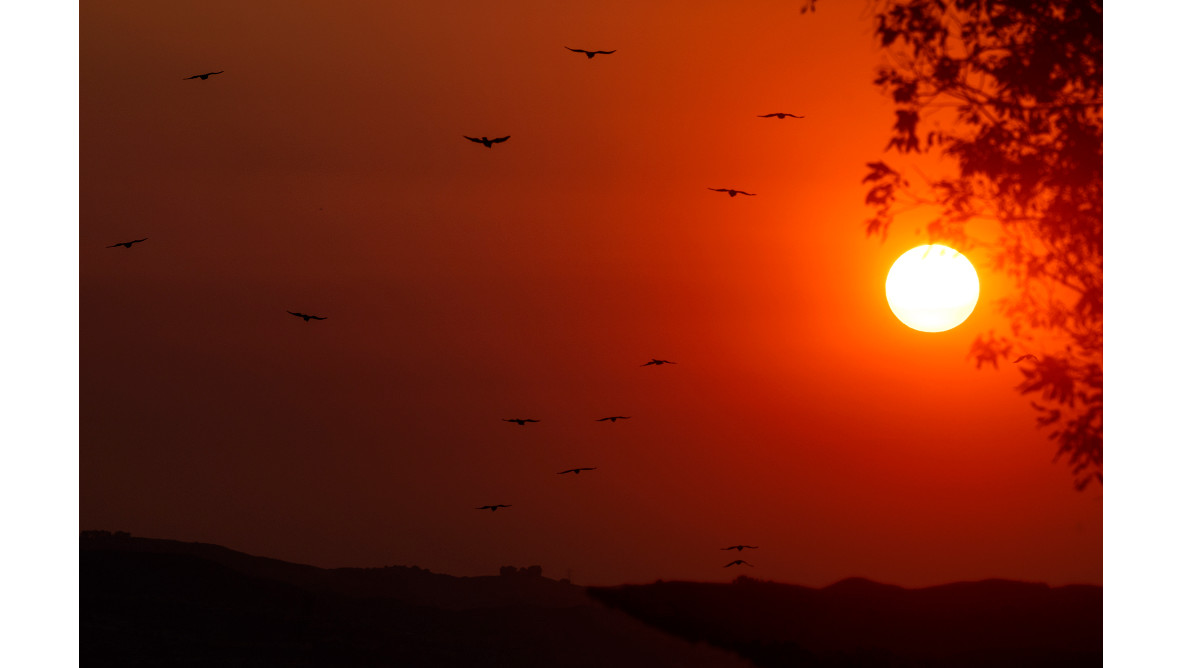After a relatively mild summer in Southern California, the season’s most intense heat wave is about to arrive.
“This is a more impactful, more significant heat wave than really what we’ve seen for the majority of the summer. We’ve had kind of more of a cooler pattern, a lot of marine layer clouds. And so this might catch some people by surprise … but [it] definitely looks pretty warm,” said Lisa Phillips, a meteorologist with the National Weather Service.
A Red Flag warning issued by the NWS goes into effect beginning 9 a.m. on Wednesday and continuing to 9 p.m. on Saturday for parts of Los Angeles and Ventura counties, including the 5 Freeway Corridor north of Los Angeles, the Santa Clarita Valley, the San Gabriel Mountains, the Antelope Valley foothills, the 14 Freeway Corridor and the Ventura County Mountains.
That means fire-weather conditions are expected to be ripe for explosive fire behavior, per the NWS.
Some areas will reach upwards of 100 degrees, as the heat wave develops in Southern California, and forecasters say residents should prepare.
Some projected highs in the region for the heat wave’s peak on Friday include:
- Long Beach: 92
- Pasadena: 101
- Los Angeles: 90
- Santa Ana: 84
- San Clemente: 81
- San Bernardino: 105
- Ontario: 100
- Murrieta: 100
“There’s a lot of places you can go to that are going to have air conditioning, public places like malls, libraries, that kind of thing,” said Phillips.
Cooling centers can be found across the region in LA County, Orange County, San Bernardino County and Riverside County.
“Make a plan for if things get too warm where you live and you have to go somewhere else, like know where you’re going to go,” Phillips said.
Heat is the deadliest weather-related hazard, killing more than 700 people a year in the U.S., according to the Centers for Disease Control and Prevention, and is preventable.
Here are some expert tips:
- Stay hydrated, drink plenty of water and electrolytes
- Stay inside, or in a cool space outside, especially during peak heat times (3-6pm)
- Walk your dog and recreate in the early morning or evening
- Outdoor workers should frequently rest in shaded or air-conditioned areas
- Don’t leave pets and children unattended in vehicles
- Look out for your loved ones and those around you
Residents will want to be on the lookout for heat-related illnesses, such as heat exhaustion and the more serious heat stroke.
Signs of heat exhaustion include: thirst, heavy sweating, and weakness, according to the CDC. Someone experiencing those symptoms should hydrate and move into a cool area. Though heat exhaustion is important to pay attention to but not deadly, it can turn into a life-threatening heat stroke. Someone suffering from a heat stroke might exhibit a number of the following symptoms: high body temperature, vomiting, nausea, headache, and the person might also stop sweating. They should seek immediate medical attention.
The following groups should take extra precautions in the heatwave: those 65 years or older, young children, people with chronic health conditions, pregnant people, people experiencing homelessness, those who work outside, and people with disabilities.
As for when residents can expect relief from the heat, “We kind of have to hold out, it’s going to be fairly hot into the weekend,” Phillips said. She’s hopeful that temperatures will begin to gradually cool down early next week.
